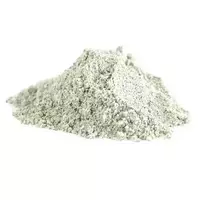Rye-wheat flour

Flour refers to one of the oldest food products that people began to use for culinary purposes at the dawn of human civilization. Flour is a product obtained from the process of grinding grains of various cereal crops. As a rule, grains of cereal plants such as wheat, rye, oats, millet, rice, as well as corn are used to make flour.
In some sectors of the modern food industry, flour plays a fundamental and defining role. For example, in baking or confectionery. After all, really, how to prepare bakery and flour products, as well as bread, which, as everyone knows, has a head without flour. The food industry has adopted a special classification, according to which flour is divided into types depending on the starting natural raw materials that were used in the process of manufacturing the product.
In addition, one or another type of flour depends on the method of production of the product. The consistency and appearance of the flour plays a role. There is higher, first or second grade flour, as well as whole grain or coarse flour. Rye flour, like wheat flour, belongs to one of the most popular varieties of the product. In the food industry, rye flour is produced as a cage, seeded and medium flour.
As a rule, rye flour is used for bread and bakery products. Diet rye flour loaves are in stable demand. Bread producers often mix rye and wheat flour. The result is rye-wheat flour, which has improved taste, and in addition, consumer characteristics.
There are several main varieties of rye-wheat flour, which differ from each other in the percentage of the two main vegetable ingredients. It is believed that the composition of rye-wheat flour should correspond to a proportion of 60: 40, where the first number shows the amount of rye flour and the second - the product made by their wheat.
Rye-wheat flour is distinguished by its grayish color. Depending on the variety, particles of grain shell may remain in the composition of rye-wheat flour. Usually, various varieties of rye and wheat flour are mixed in bakery production to make rye-wheat flour. for example, wheat flour of the 2nd grade and rye upholstery flour are used to produce rye-wheat flour.
Professionals claim that mixing different varieties of the product significantly improves the quality of rye-wheat flour, and therefore the taste, consistency, aroma, color and other consumer characteristics of the finished bread and bakery products.
rye-wheat flour 264 kCal
Energy value of rye-wheat flour (Ratio of proteins, fats, carbohydrates - ju):
Proteins: 12.8 g (~ 51 kCal)
Fats: 1.5 g (~ 14 kCal)
Carbohydrates: 76.2 g (~ 305 kCal)
Energy ratio (b | y): 19% | 5% | 115%
 Español
Español Français
Français Português
Português Русский
Русский 简体中文
简体中文 繁體中文
繁體中文 日本語
日本語 한국어
한국어 العربية
العربية Türkçe
Türkçe Қазақ
Қазақ Deutsch
Deutsch Italiano
Italiano Українська
Українська
